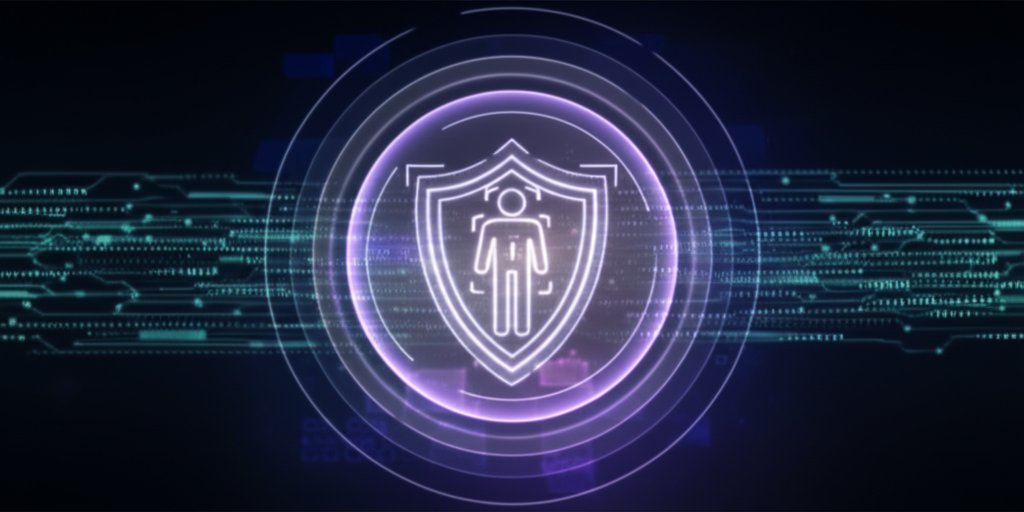What Makes Passwordless Authentication the New Gold Standard for Security?
In our increasingly digital world, strong online security isn’t just a recommendation; it’s a necessity. You might be feeling a constant tension between remembering complex passwords and keeping your accounts safe from cyber threats. We’ve all been there, haven’t we? Constantly juggling unique combinations for every service, only to be met with a “weak password” warning or, worse, a notification about a data breach. But what if there was a better way? A way that was not only more secure but also simpler? That’s exactly what passwordless authentication promises, and why it’s rapidly becoming the gold standard for protecting your online accounts.
This isn’t just a minor improvement; it’s a fundamental shift in how we verify our identities online. Passwordless authentication is designed to eliminate the inherent weaknesses of traditional passwords, offering unparalleled protection against common cyberattacks like phishing and credential theft. We’re going to explore what makes this approach so powerful, how it works, why both everyday internet users and small businesses should seriously consider embracing this new era of digital trust, and address any common concerns you might have.
The Cracks in Our Password Armor: Why Traditional Passwords Fail Us
For decades, passwords have been our first line of defense online. But let’s be honest, they’re not holding up well. The truth is, traditional passwords are fundamentally flawed, and we’re paying the price in security breaches and endless frustration.
The Human Factor
We’re only human, right? And humans aren’t great at generating and remembering truly strong, unique passwords for dozens, sometimes hundreds, of different accounts. This leads to predictable behaviors: using easy-to-guess words, sequential numbers, or, most dangerously, reusing the same password across multiple sites. Cybercriminals know this, and they exploit it relentlessly. It’s not your fault; it’s just how our brains work, making passwords a persistent security weak link.
The Cybercriminal’s Playground
While we struggle with remembering “P@$$w0rd123!”, cybercriminals are employing sophisticated tactics that render even decent passwords vulnerable:
- Phishing Attacks and Credential Theft: You’ve probably seen them — those deceptive emails or fake websites designed to trick you into revealing your login details. Once you enter your password on a malicious site, it’s gone. Simple as that, and shockingly effective.
- Credential Stuffing and Brute-Force Attacks: If your password is stolen from one site, criminals will “stuff” those credentials into hundreds of other popular services, hoping for a match. Brute-force attacks involve algorithms that systematically try millions of password combinations until they hit pay dirt. These automated attacks scale rapidly, making weak passwords an open invitation.
- The Sheer Volume of Data Breaches: We see headlines about massive data breaches almost weekly. A common denominator? Stolen usernames and passwords. Your credentials, however unique, could be exposed through no fault of your own if a service you use gets compromised. This is where the inherent security struggle with traditional password methods often comes into sharper focus as a benefit for passwordless solutions.
The Hidden Costs
For individuals, forgotten passwords mean frustrating resets and temporary account lockouts. For small businesses, the costs escalate significantly. Think about the IT support time wasted on password resets, the lost productivity from employees locked out of critical systems, and the potentially devastating impact of a business account compromise. These hidden costs add up quickly, making traditional passwords an economic drain as much as a security risk.
Enter Passwordless: A New Paradigm for Digital Trust
It’s clear we need a better approach, and that’s precisely what passwordless authentication delivers. It shifts the entire security model from remembering secrets to proving identity.
What Exactly is Passwordless Authentication?
At its core, passwordless authentication means verifying who you are without ever typing a traditional password. Instead of “something you know” (like a password), it relies on “something you have” (like your phone or a security key) or “something you are” (like your fingerprint or face). This fundamental change makes it far more difficult for unauthorized users to gain access, because there’s simply no password to steal, guess, or phish.
How Passwordless Authentication Works (The Core Concept)
While the various passwordless methods may seem different on the surface, many of the most secure ones, like passkeys, leverage a powerful underlying technology: cryptographic key pairs. Instead of a shared secret (your password) that both you and the website know, passwordless systems use these unique, mathematically linked keys.
- When you first set up passwordless authentication for a service, your device (your smartphone, computer, or a physical security key) generates two distinct, mathematically linked keys: a private key and a public key.
- Your private key stays securely on your device, never leaving it. It’s often protected by a PIN or biometric (like your fingerprint or face), ensuring only you can access it.
- Your public key is securely sent to and stored by the website or service you’re logging into.
- When you want to log in, the website sends a unique cryptographic “challenge” to your device.
- Your device then uses its stored private key to cryptographically “sign” that challenge. This signature is unique to your private key and the specific challenge.
- The website receives this signed challenge and uses your stored public key to verify the signature. Because the keys are mathematically linked, if the signature is valid, it proves that your device (and therefore, you) authorized the login.
This entire process happens behind the scenes, often leveraging open industry standards like FIDO2 (Fast Identity Online) and WebAuthn. It’s fast, seamless, and incredibly secure, and you never have to worry about your private key being stolen from a server because it’s only ever on your personal, trusted device.
Why Passwordless is the New Gold Standard for Security
This isn’t just about convenience; it’s about fundamentally superior security. Passwordless authentication tackles the most prevalent cyber threats head-on, delivering a level of protection traditional passwords simply can’t match.
Unmatched Phishing Resistance
This is arguably the biggest game-changer. Since you’re not typing a password onto a website, phishing sites can’t trick you into giving it up. Even if you land on a convincing fake login page, your device (specifically, the passwordless authenticator on it) won’t authenticate with it because the cryptographic “challenge” won’t match the legitimate site’s origin. It effectively cuts the legs out from under one of the most common and effective cyberattacks.
Eliminating Credential Theft
With no passwords stored on servers or transmitted across networks, there’s nothing for hackers to steal in a data breach. This means no credential stuffing attacks, no password spraying, and no worries about your credentials being harvested from a compromised database. Your authentication factor stays with you, on your device, meaning a breach on one service won’t compromise your access elsewhere.
Stronger Against Brute-Force Attacks
Traditional passwords are vulnerable to brute-force attacks because they are, ultimately, guessable. Passwordless authentication, however, relies on unique cryptographic challenges that can’t be guessed or brute-forced. Each login is a fresh, one-time cryptographic exchange, making it virtually impossible for attackers to crack.
Enhanced Account Recovery
Worried about losing access? Passwordless systems often build in more secure recovery options than simple “forgot password” links, which can themselves be targeted by phishers. These methods can include using multiple authenticators or dedicated recovery keys, making the process robust yet accessible while maintaining high security standards.
Multi-Factor Authentication (MFA) Built-In
Many passwordless methods inherently incorporate multiple factors. For instance, using your fingerprint on your phone to log in involves “something you have” (your phone) and “something you are” (your biometric). This makes passwordless authentication a powerful form of MFA, often without any extra steps from you, elevating it to a gold standard.
Beyond Security: The Benefits of a Passwordless Future
While security is paramount, passwordless authentication offers significant advantages that improve our digital lives and streamline business operations.
Tailored Advantages for Everyday Internet Users
For individuals managing a growing number of online accounts, passwordless offers a much-needed breath of fresh air:
- Unmatched Convenience: Imagine never having to type or remember a password again. Logins become faster, smoother, and less frustrating. A quick scan of your face or touch of a finger, and you’re in. This isn’t just convenient; it reduces friction and makes digital interactions more pleasant across all your devices.
- Enhanced Personal Security: Your personal accounts — banking, email, social media — become significantly more resistant to common attacks like phishing and data breaches. Your digital identity is protected by something you own or are, rather than a guessable secret.
- Reduced Password Fatigue: No more complex password requirements, no more trying to remember which combination you used for which site, and certainly no more “password resets” notifications filling your inbox. This mental relief and simplification of your online life is a huge win for everyone.
Strategic Benefits for Small Businesses
For small and medium-sized businesses (SMBs), the advantages extend beyond individual user experience to tangible operational and security benefits:
- Boosted Employee Productivity: Fewer password-related issues translate directly into increased productivity. Employees spend less time dealing with forgotten passwords, password resets, or account lockouts, allowing them to focus on their core tasks. Think of the collective hours saved daily across your team.
- Fortified Business Security: Passwordless authentication significantly reduces the risk of credential theft, phishing, and insider threats, which are common vectors for SMB cyberattacks. This helps protect sensitive business data, customer information, and intellectual property, strengthening your overall security posture and potentially aiding in compliance efforts.
- Reduced IT Overhead: For IT staff, the burden of managing password resets and related support tickets is dramatically reduced. This frees up valuable IT resources to focus on more strategic projects, innovation, and proactive security measures rather than reactive password management. The transition to passwordless methods becomes an operational boon.
- Simplified Onboarding and Offboarding: Managing employee access becomes more streamlined and secure. New hires can be set up with robust authentication quickly, and access can be revoked efficiently upon departure, reducing potential security gaps.
- Professional Image & Trust: Adopting cutting-edge security practices like passwordless authentication demonstrates a commitment to protecting your clients’ and partners’ data, enhancing your business’s reputation and building greater trust.
Common Types of Passwordless Authentication You’ll Encounter
You might already be using some forms of passwordless authentication without even realizing it. Here are the most common types, with a simple explanation of how they work and illustrative examples:
Biometrics
This is perhaps the most familiar form. Biometric authentication uses unique physical characteristics to verify your identity. Your biometric data never leaves your device; it’s used locally to unlock the private key or a secure token stored on your device.
- Fingerprint Scanners: Your unique fingerprint pattern is scanned and matched against a securely stored template on your device.
- Example: Unlocking your smartphone with your thumbprint (e.g., Touch ID on iPhones, many Android devices) or logging into Windows using a laptop’s fingerprint reader via Windows Hello.
- Facial Recognition: Your unique facial features are analyzed and matched against a stored template. Advanced systems use 3D mapping to prevent spoofing.
- Example: Unlocking your iPhone with Face ID or logging into your computer with your face using Windows Hello on many PCs.
- Iris Scans: Less common in consumer devices but used in some high-security applications, this method identifies you by the unique patterns in your iris.
- Example: Accessing secure facilities or some high-end smartphones that previously offered iris scanning as a login option.
Passkeys (FIDO2 Security Keys)
Passkeys are the modern embodiment of the cryptographic key pair system we discussed earlier. They are an open standard that allows you to log in to websites and apps without a password, using your device as the authenticator. They are highly resistant to phishing.
- Hardware Security Keys: These are physical devices, often resembling USB drives (like YubiKeys or Google Titan Keys), that generate and securely store your private keys. You plug them in or tap them to your device to authenticate.
- Example: Plugging a YubiKey into your computer’s USB port and tapping it when prompted to log into your Google account or a corporate web application.
- Software-Based Passkeys: Increasingly, your smartphone or computer itself can act as a passkey authenticator, securely storing private keys and using your device’s biometric or PIN to unlock them. These passkeys can often sync across your devices via a secure cloud (e.g., Apple iCloud Keychain, Google Password Manager).
- Example: Logging into a website on your laptop, and your laptop prompts your phone to confirm the login. You then use Face ID or your fingerprint on your phone to approve, and you’re logged in on your laptop. This is what Google, Apple, and Microsoft are widely implementing.
Magic Links & One-Time Passcodes (OTPs)
These methods send a temporary code or a clickable link to your email or phone to verify your identity. While they eliminate password typing, they do have security caveats because they rely on the security of the communication channel (email or SMS).
- Magic Links: An email with a unique, time-sensitive link that logs you directly into a service when clicked.
- Example: Receiving an email from a service like Slack or Medium that says “Click here to log in,” which instantly authenticates you. While convenient, if your email account is compromised, so is your “passwordless” login.
- One-Time Passcodes (OTPs): Temporary codes sent via SMS or email that you must enter into the login screen.
- Example: Entering a 6-digit code sent to your mobile phone via text message after typing your username on a banking website. SMS-based OTPs are vulnerable to SIM-swapping attacks, making them less secure than other passwordless methods, especially for critical accounts. We generally recommend authenticator apps over SMS for OTPs when possible.
Push Notifications
Many authentication apps (e.g., Microsoft Authenticator, Google Authenticator) can send a push notification to your trusted mobile device. This acts as an approval mechanism.
- Example: Attempting to log into an enterprise application, and your phone buzzes with a notification asking, “Are you trying to sign in?” You simply tap “Approve” (or enter a number shown on your computer screen to match) on your phone to log in, confirming that it’s you attempting to access the account.
Embracing the Gold Standard: How to Get Started with Passwordless
Making the switch to passwordless doesn’t have to be daunting. It’s often a gradual process, and you can start today.
For Individuals
- Enable Passkeys/Windows Hello/Face ID on Personal Accounts: Many services and operating systems now support these. Look for options in your security settings for Google, Microsoft, Apple, and popular apps. This is the simplest way to start your journey to passwordless security, as your device handles most of the complexity.
- Use Authenticator Apps for MFA: While not fully passwordless (you still usually enter a username), using an authenticator app (like Google Authenticator, Microsoft Authenticator, Authy) for two-factor authentication is a significant step up from SMS-based codes and often paves the way for truly passwordless logins.
- Look for Passwordless Options: Keep an eye out for “Sign in with a security key,” “Sign in with Passkey,” or “Passwordless login” options on your favorite websites and apps. More and more services are adopting these robust authentication methods.
For Small Businesses
- Audit Current Authentication Methods: Understand where your business is most vulnerable with traditional passwords. Identify critical systems and applications that would benefit most from passwordless adoption first.
- Phased Implementation Strategies: You don’t have to switch everything at once. Start with a pilot group or specific, less critical applications to iron out any kinks and gather feedback before a wider rollout.
- Leveraging Existing Tools: Many business identity providers, like Microsoft Entra ID (formerly Azure AD), Google Workspace, or Okta, offer robust passwordless capabilities that integrate with your existing infrastructure. This can make the transition surprisingly smooth and less disruptive.
- Educating Employees: Crucially, explain the “why” behind passwordless to your team. Highlight the benefits — both in terms of enhanced security and ease of use — and provide clear instructions and support during the transition. Empowering your employees with knowledge is key to successful adoption.
Addressing Common Concerns and Paving the Way for a Passwordless Future
It’s natural to have questions when adopting new technology. Let’s tackle a couple of common concerns and offer reassuring solutions to help you build greater trust.
Navigating Potential Challenges
- Device Loss or Theft: This is a valid question, and developers of passwordless systems have thoughtfully designed robust recovery options. You might:
- Have multiple authenticators registered for an account (e.g., your smartphone and a hardware security key).
- Use a dedicated recovery code or passphrase stored securely offline (much like you would a backup password).
- Leverage another trusted device (like a secondary laptop or tablet) or an administrative process with your service provider to regain access.
The key is to set up these recovery options in advance, just as you would with traditional password recovery, but often with higher security standards built-in.
- Initial Setup Complexity: While the concept might be new, modern passwordless systems are designed for user-friendliness. The initial setup usually involves a few simple steps, often guided by visual prompts or QR codes.
- Counterpoint: While there might be a minor learning curve for the first setup, the long-term gains in security and convenience far outweigh this initial effort. Think of it as a one-time investment for a lifetime of easier, more secure logins.
- The “Hack-Proof” Myth: No security system is ever 100% “hack-proof.” Cyber threats constantly evolve, and vigilance is always required. However, passwordless authentication significantly reduces the attack surface and eliminates the most common vectors for account compromise — stolen passwords and phishing.
- Counterpoint: While new attack methods may emerge, the core cryptographic principles of passwordless authentication make it vastly more resilient than traditional password systems. It forces attackers to target individual devices directly, which is far more complex and costly than breaching a central database or sending out mass phishing emails. It raises the bar significantly for attackers.
The Road Ahead: An Inevitable Shift
The future is definitely passwordless. We’re seeing rapid innovation and widespread adoption by major tech companies like Apple, Google, and Microsoft, along with a growing number of online services. As the technology matures and becomes even more integrated into our devices and digital lives, it will simply become the default, seamless, and most secure way to interact online.
Secure Your Digital Life with the New Gold Standard
The landscape of online security is always changing, and it’s our responsibility as digital citizens and professionals to keep pace. Traditional passwords have served us, but their time as the primary security mechanism is quickly fading. Passwordless authentication offers a powerful, elegant, and user-friendly solution that addresses the fundamental flaws of old methods.
By embracing passwordless technologies, you’re not just enhancing your security; you’re taking control of your digital identity, simplifying your online experience, and future-proofing your defenses against increasingly sophisticated cyber threats. Protecting your digital life isn’t an option; it’s a must. Take the first step today: start exploring passwordless options for your key accounts, leverage authenticator apps for stronger multi-factor authentication, and secure your digital life for the future.









